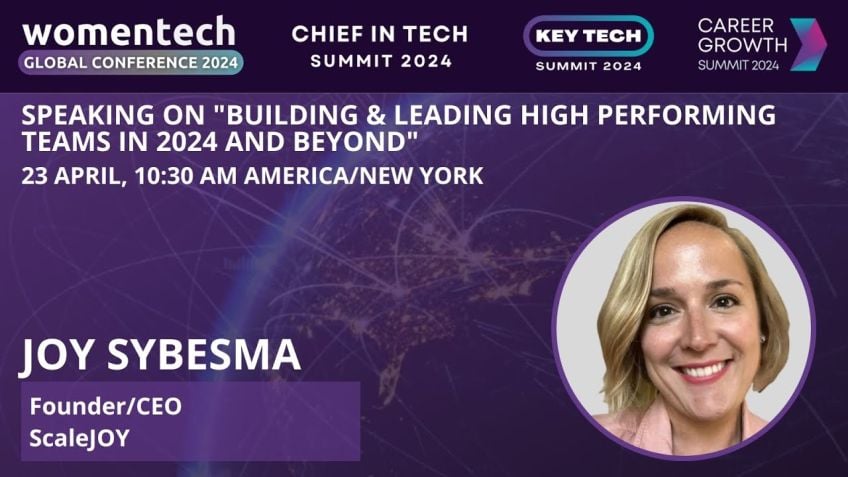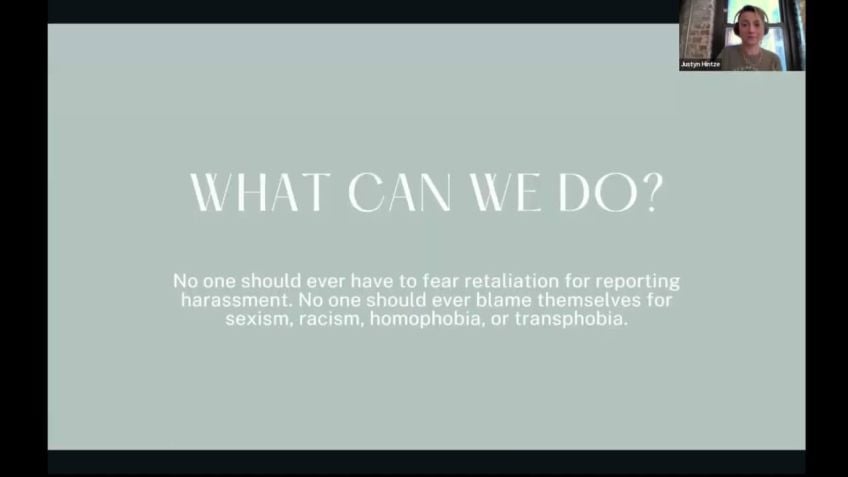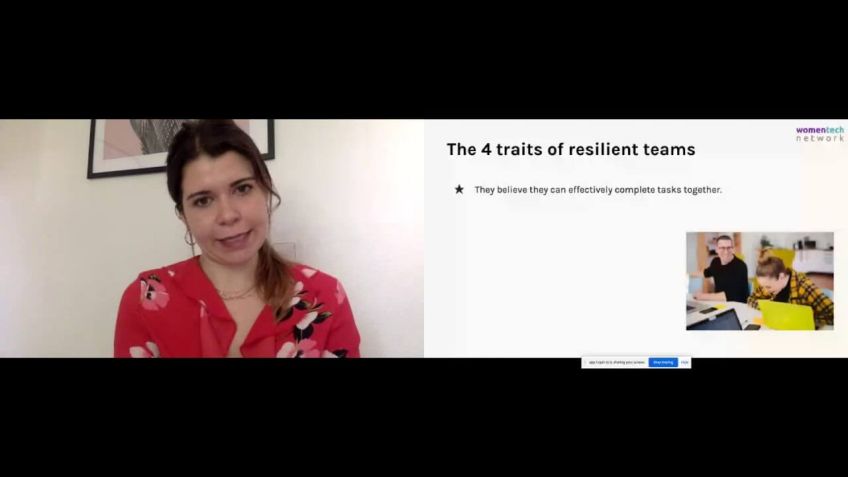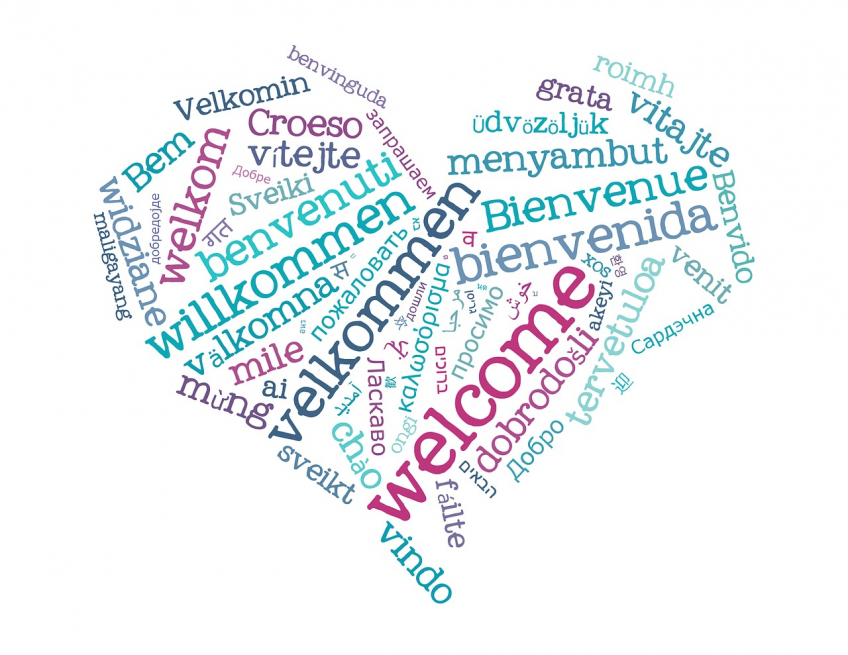Why traditional mentoring programs fail to bridge the diversity gap? by Estelle Roux-Stevens
Reviews
How To Create A Successful Mentoring Program: A Step-By-Step Guide
As a career HR professional turned business owner, I've had the privilege of working in many different industries and cultures. This journey has honed my passion for helping IT and HR leaders enhance their impact on their teams. My work at MetaJam embodies this passion. MetaJam is on a mission to foster knowledge sharing in organizations worldwide, thus empowering their unique and diverse employees. As advocates for knowledge sharing, we firmly believe that without people learning from each other and sharing their experiences, progress is unattainable.
In this article, we'll explore how to create an impactful mentoring program to bolster your diversity and inclusion initiatives. We'll also walk you through the pitfalls that can hinder a program's success and give strategies to circumvent these.
Understanding The Power Of Mentoring Programs
Before designing a mentoring program, it's crucial to understand its immense potential. Mentoring programs have seen growing interest over the years and have become crucial instruments in improving employee satisfaction and retention. According to an article from Forbes, successful talent development plans invariably include strong mentoring programs.
Role of Mentoring in Enhancing Diversity
The role of mentoring within diversity is to foster an open dialogue aimed at challenging biases and status quo within an organization. Mentoring relationships are opportunities for mutual learning and growth, facilitating a diverse and inclusive work culture.
Perfecting The Art of A Successful Mentoring Program
While many organizations have mentoring as an overarching topic, it often becomes relegated to a tick-box exercise, devoid of intention and purpose. Therefore, a successful mentoring program needs a thoughtful design that ensures it contributes meaningfully to the diversity and inclusion agenda.
The Downfalls of Unstructured Mentoring Programs
Let's look at some common reasons why many mentoring programs fail:
- Lack of purpose: Mentoring programs with vague goals often lack a clear direction. Every program must have a clear purpose that aligns with the organization's objectives.
- Lack of accountability: Accountability in a mentoring program means creating a structure that ensures mentors and mentees understand why they are part of the program and what they expect to achieve.
- Lack of impact: Successful mentoring programs are data-driven. They are assessed by goals and Key Performance Indicators (KPIs), which help track the program's success.
Failing to take these factors into account can lead to mentoring relationships with no clear objectives or accountability and deal a significant blow to your diversity and inclusion strategy.
Establishing A Successful Mentoring Program
Creating a successful mentoring program requires a clear blueprint that considers the program's intention, goals, and participants' needs. Here are three key considerations when building your mentoring program:
1. Program Purpose: Clearly communicate the purpose and goals of your mentoring program to participants. This purpose should align with the organization's overall goals and KPIs.
2. Culture: The mentoring program should foster a culture of intentionality and accountability. This involves having a clear rollout strategy, effective communication tools, and a program owner who will oversee mentoring relationships and deliverables.
3. Intention: The intention of the program should be clearly communicated. This includes the ways to recruit, train, and measure progress intentionally, aligning the purpose with overall organizational goals.
Final Thoughts
In conclusion, establishing a successful mentoring program necessitates having a clear purpose, fostering a supportive culture, and aligning the program's goals with the organization's objectives. With the right tools and strategies based on these careful considerations, your mentoring program can indeed become a potent tool, fostering a more inclusive and diverse work culture. Feel free to reach out to me on LinkedIn or any other platform for more insights into creating a successful mentoring program.
Video Transcription
Um So yeah, really great, great to uh to have you here. Thank you for joining, joining the session. Uh As I mentioned, um I was born and raised in South Africa. However, I spent my twenties and my thirties living in the UK.And now I live in the Netherlands with my kiwi husband and my two Children. Um So I've been working in the field of HR international hr for uh over 20 years, I started my um my career on a trade floor in, in the UK and I worked at many, many different different places, different locations, different companies um until I was uh I had the job of um head of hr hr director for a big global it consultant team.
I left that role uh in 2018 to start my own business, my own entrepreneurial journey. And uh I'm now the CEO and co-founder of me jam. So I'd love to tell you a little bit about tomato jump before we jump in. So personally, I'm really passionate about helping it leaders, hard leaders to increase their impact. So, and we'll talk about impact uh in a little bit. But uh really thinking about their impact when they come to their uh intentions around their team and how they build their teams.
Um At meta jam, we're on a mission and that is to bring the power of knowledge sharing to organizations worldwide and helping them uh to enable them to empower their unique and diverse employees. So we believe that people and their experiences are the greatest assets of any organization.
So without people learning from people, people sharing um experiences with each other progress is is not possible. So we've created a knowledge sharing solution to help organizations empower their unique and diverse people. So in today's session, we are going to talk about creating a mentoring program to help with your diversity and inclusion goals. Uh We're going to talk about the drivers around that uh how to build equity within your program and also how to build a culture around mentoring competencies.
But before we do that, you know, we talk about mentoring and mentoring benefits. It's a real, it's been a real big topic for the last few years. It's, it's also a bit of a buzzword, I think also, unfortunately, um but if we think about how to really, really make an impact on how to deliver and build a, a good mentoring program, uh you know, we'll dive into that today, but we do know the benefits here is really to help improve employee satisfaction and retention.
And very often, you know, those are topics I've talked around, talked about uh in, in the boardroom around the table, but never really fully understood in terms of what that really, really means within the, within the organization. There's a really fabulous um article from Forbes, in fact, that talks about the seven ways to improve or close the gap and improving um equity and inclusion within your organization. And that is to build really good solid talent development plans, including mentoring programs. So, Forbes can't be wrong.
Um So if we move on to the role of mentoring specifically within diversity, and, you know, I don't often like to quote sli um quote slides, but I think this is a really good uh example or really good um um quote specifically around the role of mentoring within diversity. So it is to develop a process of open dialogue and this is really important. It's an open dialogue between two people um who, whose aim is to together uh challenge that bias or challenge the, the status quo within an organization specifically around um the diversity and inclusion uh topic within organizations. So talking about them having that mu mutual shared learning.
Um So yes, this is, I think a really nice quote that kind of sums it up quite well in terms of why, why it's um why it's important so to um move on to the the power of mentoring so many companies these days, they have mentoring as a topic, gender topic. Um but they also have a uh an agenda topic around, you know, harnessing the effectiveness of their diversity and inclusion within the organization and really making that um uh a, a topic to uh within the, within the, within the hr schedule. So it's hr genders, but many programs often uh are built just as tick box exercises. Yes, great. We have a program. Uh, wonderful, anyone can join. Of course, it's open to everybody. Everyone's welcome uh to join the, the program. But what often happens is that they are built with one thing, one key thing missing that is intention. Um So the lack of the intention within a structure or an unstructured program really um provides a big hurdle when it comes to your de I strategy because you can't just assume that everyone will join just because it's a program that's uh designed and uh you know, that it is open um for, for anybody.
So that lack of intention is a, is a real big, big point. Um So I'd like to talk to you a little bit about then why programs fail. So if you think about these three things, you know, lack of purpose, lack of accountability and lack of impact, um It sort of sounds obvious but if you think about them, uh those three topics, we all love Simons. So we've all read his uh or, you know, he's to talk about purpose and the start with the y you know, program that lacks purpose, lacks, why lacks in that lacks intention, um You're setting yourselves up to fail. So you have to design a program that really thinks about the purpose, thinks about why it's why you why you bring a mentoring program within your organization. And what what are you trying to achieve? Um lack of accountability. Now, that's an interesting one. You know, we provide a mentoring solution. We have technology specifically designed around the accountability points. So then creating the data around that, helping with the matching, helping with the scoring. Um and then bringing people together who may not have otherwise connected.
So creating that little bit of structure so that mentors and mentees know um why they're joining the program, um what they're going to achieve and then learn from better, learn from from each other. So that's the the accountability point in terms of impact. So data, love, data, everyone loves a bit of data. So creating measures for success, like what is going to make this program successful? Um Why, why do you so think about getting the purpose, making that into the KPIS and the goals of the the program and thinking about how you can link all that together? So often you see programs are not designed with these three things um uh taken into account that then takes us to the next slide, which then brings us to mentoring relationships that look a little bit like this. So, and I'm sure some of you have been in, maybe all of you have been in a mentoring relationship and it be nice to, to know um if you've either been in a relationship before a mentoring relationship or currently. So maybe if you put that in your chat, that'd be really good to, to also know that. But then these may or may not, hopefully, um they're familiar to you. So programs with no clear objectives, no goals to be build together.
Let's have a chat and see where this relationship goes and if we're able to help each other sounds great. But, you know, then it's ends up being more of a friendship perhaps than a mentoring relationship. You often end up with junior people, being mentor, mentor, senior people, you know, and there's no no clear purpose there um or just within the same department, within the same teams, lack of a framework. Um It's often set to self manage. So we have a program if you go mentor each other and, and, and you know, see, see where that takes us not for spreadsheets. This is a pet hate of mine. Um Relationships that are matched on, on spreadsheets. Um You know, not what ideal. And another reason why we've, why we exist is to help with that, that matching no accountability, no reporting, very little training. Again, it's a real pain point for me. No training, you know, men, mentor mentee training, super important, you know, really think about that, you know, there are many different things that you can um support one another on or that you can support your teams on when it comes to, to the training aspect in terms of um what you share like uh you know, good listening skills, um uh you know, negotiation skills, all, all these things that you can think about when it comes to, to training.
Um uh in terms of mental, mental training, um it's a little bit isolated. So it's a program that kind of just exists on its own there. It's not really a joined up thinking within the rest of the com company strategy and then no sense of community. We have learned over the last couple of years that the most successful mentoring programs are the ones that are built around community. So with our solution, we also provide that community element that companies um can then use to connect with others within the organization, other types of learning programs, other ways for people to, to connect um and meet mentors mentees and and, and others they could learn from.
So if we think about then the building a program that is set up for success, I want you to have three key things in mind. So first think about your program, like the reason that the reason you have this program, what's the intention? Think about ways you can innovate or uh provide or disrupt, for instance, how maybe think about some other programs that you were part of before or that you've designed or implemented before? How can you innovate on that? How, what, what can you do to improve on those programs?
What education or learning drivers can you implement or bring into the program that's useful for everybody within your organization to take from or to learn from or that they could contribute to break down structural barriers. So when I talk about structural barriers, barriers, it's not just within uh cultures, et cetera, but also within your company, within your teams. How other teams can help each other, how other departments can support one another and how other and think about skills and things that you can bring together in terms of that, in terms of the program, which takes me straight into the skills. So defining, defining the key comment is that you would want to not only deliver but improve or talk about or learn within the program and then tie that back into the overall goals and KPIS for your program. So really focusing on this goals element uh within the program, like why? And the purpose of the program clearly communicated. So sort of leaps into the next one, which is the culture, but it's really clearly communicated. So think about your um mentoring campaign. How do you deliver that into your organization? What it is you're sharing with the company in terms of your, your program, why you're building it? What are your objectives. Um You know, and how it's going to be rolled out, how people can join.
Um all these things you can take into account also how people are gonna be matched. Um You know, and what criteria you take into account. So think about that communication element super important. Um And it needs to be part of a, a overall roll out strategy within your company. It takes me to the cultural point. So ownership, you need a program owner, someone who needs absolute ownership of the program, someone who's gonna look at the, the objectives, it's gonna look at the matching, it's gonna look at your platform, it's gonna design the um deliverables that you might wanna um drop into the program.
Um And, and provide training. So who's gonna provide the training for both the mentors and mentees and how that's going to be um shared within the, the organization and then to create that culture of intent. So I can move straight into, into that point. Um In terms of the intention, it's super, super important. And I think um I've got three, three key things here. I'd like to, to share with you when we talk about the intention of the program just because I think it's so, so, so important to really focus, focus on that. So it sounds easy enough, you know, we, we see many, many programs. But if you start off with some specific intentions and it could be that you link them back to specific specific things within your organization and to give you some examples um of what could be, it could be to increase uh representation, minority groups within the man managerial positions or um uh more Latinas in the engineering roles within your organizations or help recruit more employees of color by, you know, whatever 2023 or something.
So up learning your intentions and then linking that back into your mentoring program. So that other employees are really clear about how, why they join the program um and how they can contribute to those overall objectives or goals within, within the organization. So then if you think about recruiting intentionally, training intentionally and me measuring intentionally, um you know, don't just assume that if you roll out a program that everyone is going to join the program and everyone's gonna show up just because it's a mentoring program, you have to approach individuals specifically, potentially or invite participants to join the program.
So, again, that campaign is really, really important to think about your mentoring campaign and how inclusive that is when, when um when building your your program. So leaning straight into the training in uh intentionally. Um So it's not just a casual networking opportunity, uh you know, clear meeting frequency of meetings, goal setting. How is communication, communication tools that you use, for instance, do you have a platform for that? Um How do you deal with sensitive conversations? Um So again, that, that training element is really, really important so that participants feel empowered um to discuss their experiences and to help problem solve uh accordingly. And then finally, um measure intentionally, you know, really think about the data that you want to collect as a program manager.
Um uh you know, in terms of the, the, the the data that you collect within the relationship. So, uh and you need a platform for that because spreadsheets are just not gonna cut it. Um And trust me, we've seen many, many clients, we've moved from spreadsheets onto a platform and it makes a really, really big difference, not only in the success of the program, but um also the overall um uh strategy they have within the, the organization to collect data on your program as much as possible.
You know, how many pro how many attendees join, how regular they connect goals that have been set that have been met. Um How many number, number of unrepresented part um group are part within the program? And do they feel supported? Um et cetera. So there's a ton of different things that you can collect within, within the program in terms of your um uh uh in terms of your data. So there you go. I hope that wasn't too quick. I know I have a very short window to, to deliver this, this workshop and, and often it's done in, in a longer uh longer time, time frame. But um I hope there's some um good piece of information that I can share with you. If you want to reach out to me, I would love to, to um to meet you um also in, in linkedin or some other places. But yeah, thank you very much for, for joining and um I hope to hear from you uh in the future.






No comments so far – be the first to share your thoughts!